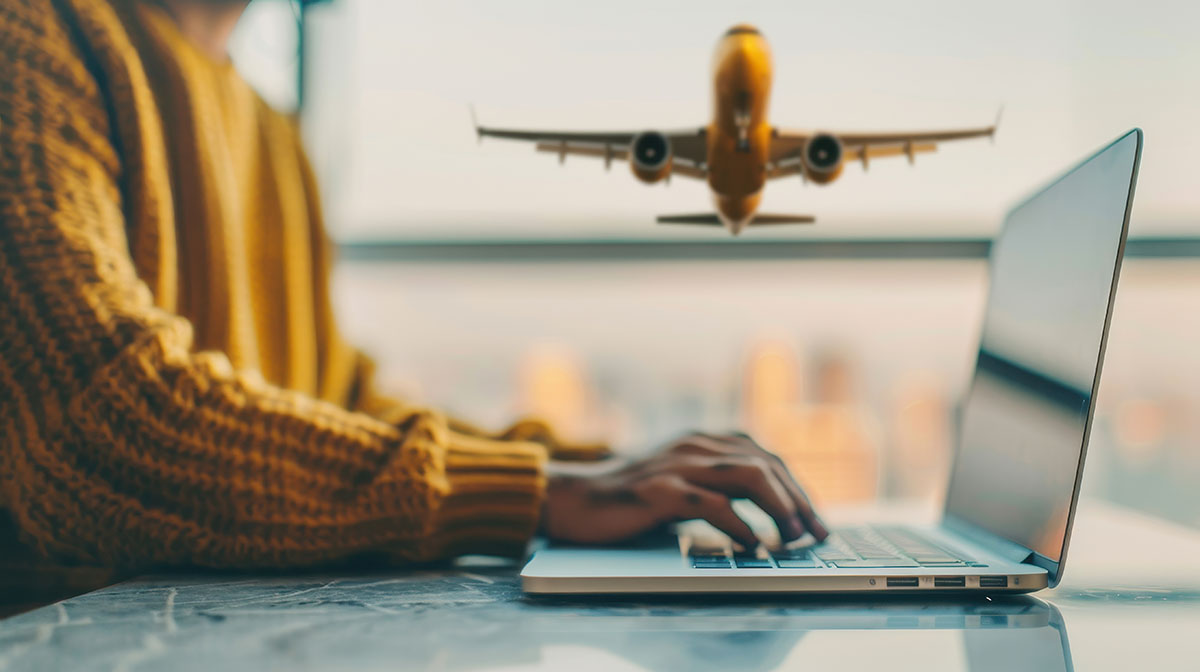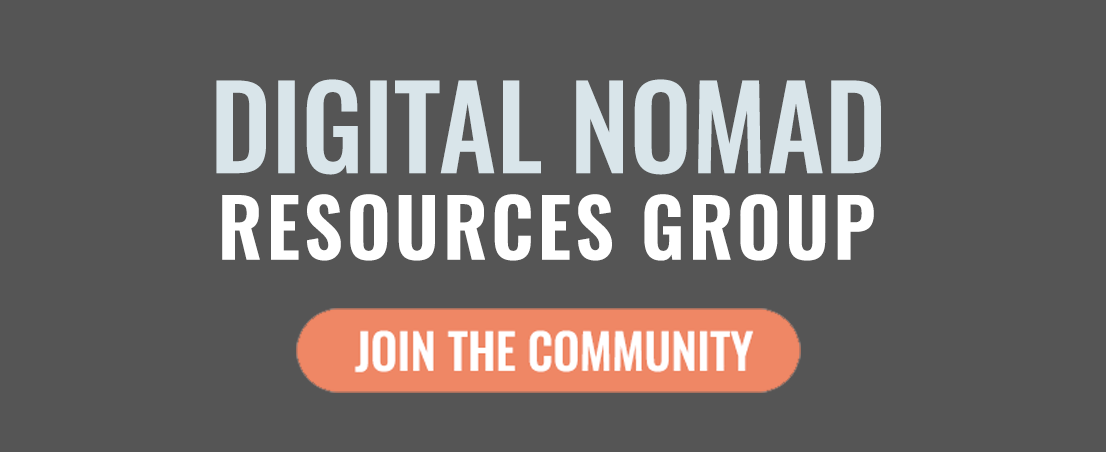For location-independent professionals, reliable internet isn’t just a convenience—it’s the foundation of your entire lifestyle. While the freedom to work from anywhere is liberating, that freedom quickly becomes stressful when you can’t connect to your next video call or access critical project files.
This guide shares battle-tested solutions to ensure digital nomads navigate connectivity challenges and stay productive no matter where your adventures take you.
Quick Basics: A SIM (Subscriber Identity Module) card is a small chip that goes into your phone or mobile device to connect you to a cellular network. It contains your phone number and carrier details. Traditionally, changing countries meant physically swapping these tiny cards to use local networks—a hassle that newer technologies like eSIMs are designed to eliminate.

International SIM Cards & eSIM Services
Physical SIM cards are increasingly becoming yesterday’s technology for frequent travelers. The hassle of finding local providers, language barriers, and document requirements can waste precious time in a new destination. eSIM technology has transformed how digital nomads stay connected across borders.
Top eSIM Providers for Digital Nomads:
- Airalo: Offers regional and country-specific data packages in over 190+ countries. Their “Discover Global” plan provides coverage across multiple regions, perfect for continent-hopping nomads. Activation is straightforward through their user-friendly app.
- Nomad eSIM: Designed specifically for digital professionals, their plans offer generous data allowances and excellent coverage in digital nomad hotspots like Bali, Medellín, and Lisbon. Their customer service specifically understands remote work needs.
- Google Fi: While primarily for US residents, this service provides seamless data in 200+ countries without changing plans or managing multiple providers. The ability to pause service during periods at home makes it especially flexible.
- Holafly: Offers unlimited data plans with a simple flat-rate structure for 100+ countries. Their single-payment model eliminates the stress of monitoring data usage during important work sessions.
Pro Tip: Always activate and test your eSIM before departing your current location. Some providers require initial activation on WiFi, which can be problematic if you’re counting on it immediately upon landing.

When to Stick with Local SIMs
Despite the convenience of eSIMs, local SIM cards sometimes remain the better option in:
- Long-term stays: For extended periods in one country, local providers typically offer better value
- Data-intensive work: If you regularly upload large files or conduct hours of video calls
- Less-traveled destinations: Where established eSIM providers might have limited partnerships
Documentation Hack: Most countries require identification for local SIM purchases. Create a digital folder with passport copies and passport-sized photos to streamline the process.
Portable WiFi Devices Worth the Investment
When coworking spaces aren’t available or local infrastructure is unpredictable, having your own WiFi hotspot provides essential peace of mind.
Our Top Picks:
- Skyroam Solis X: This pocket-sized device offers unlimited data in 130+ countries. Its built-in battery doubles as a power bank, and it can connect up to 10 devices simultaneously—perfect for collaborative work sessions. The optional daily rental model makes it cost-effective for shorter trips.
- GlocalMe G4 Pro: With both cloud SIM technology and the ability to use physical SIM cards, this versatile device gives you multiple connectivity options and competitive pay-as-you-go rates. Its touchscreen interface makes managing connections intuitive.
- Netgear Nighthawk M1: For nomads who occasionally need serious bandwidth for video production or development work, this premium mobile router delivers exceptional speeds when connected to 4G/LTE networks. It’s bulkier than other options but outperforms them for demanding applications.
- Huawei E5577: This budget-friendly option provides reliable connectivity without premium features. Its exceptional battery life makes it perfect for long workdays away from power sources.
Cost-Benefit Analysis
While the upfront investment in a portable WiFi device might seem steep ($100-300), consider:
- The income potentially lost from missing just one important client meeting
- The stress of frantically searching for reliable WiFi before deadlines
- The flexibility to work from scenic locations rather than being tethered to cafés
- The security benefits of avoiding public networks for sensitive work
For most serious digital nomads, a quality portable hotspot pays for itself within the first month of travel.
VPN Services: Security, Access, and Peace of Mind
Beyond the obvious security benefits when using public WiFi, a reliable VPN solves numerous digital nomad challenges:
- Access banking websites that block foreign IP addresses
- Maintain access to streaming services and tools from your home country
- Work around local internet restrictions in countries with censorship
- Secure your connection when handling client data on public networks
VPNs That Deliver for Digital Nomads:
- ExpressVPN: Consistently reliable connections in 90+ countries with minimal speed reduction. Their split tunneling feature lets you route only specific apps through the VPN—useful for accessing home country services while browsing locally.
- NordVPN: Excellent for video conferencing with minimal lag. Their CyberSec feature blocks ads and malware, creating a cleaner browsing experience on questionable networks.
- Mullvad: For privacy-focused nomads, this service requires no personal information and accepts cryptocurrency payments for complete anonymity.
- Surfshark: Allows unlimited device connections under one subscription, making it cost-effective for protecting all your devices plus any shared with travel companions.
Bandwidth Conservation Strategy: Configure your VPN to automatically connect on public WiFi but remain off on trusted networks to conserve battery and optimize speed when security isn’t a concern.
Speed Test Tools: Know What You’re Working With
Before settling in for a productive session, quickly assess your connection with these tools:
- Speedtest by Ookla: The standard for basic speed testing
- Fast.com: Powered by Netflix, focuses on download speeds for streaming
- Meteor: Tests performance of specific apps like Zoom over your current connection
Understanding your connection’s capabilities helps you plan your workflow—schedule video calls during stronger connection periods and save offline-capable tasks for uncertain connectivity.
Signal-Boosting Equipment for Challenging Environments
For remote locations or buildings with poor signal penetration, these tools can significantly improve connectivity:
- Portable WiFi Repeaters: Extend existing WiFi signals to your workspace
- Mobile Signal Boosters: Amplify cellular signals in areas with weak reception
- Directional Antennas: For fixed locations with known cellular towers nearby
These specialized tools aren’t necessary for most digital nomads but can be game-changers for those working in rural areas or buildings with connectivity challenges.
Connectivity Contingency Planning
Experienced digital nomads know that redundancy prevents disasters. Consider these backup strategies:
- Dual-Provider Approach: Maintain access to both a local SIM and an international eSIM, so network issues with one provider don’t leave you stranded.
- Map Offline Work Options: Before arriving in a new location, research cafés and coworking spaces with reliable WiFi. Apps like WorkFrom and Coworker help identify tested options.
- Bandwidth Management Tools: Applications like TripMode (Mac/Windows) let you control which apps use your precious data when tethering, preventing background processes from consuming your allowance.
- Low-Bandwidth Alternatives: Prepare for connectivity challenges by having offline versions of critical documents and low-bandwidth communication options like Slack’s “data saver mode.”
- Schedule Around Peak Usage: In many destinations, internet speeds vary dramatically throughout the day. Schedule critical online tasks during off-peak hours when possible.
Destination-Specific Connectivity Insights
Connectivity solutions aren’t one-size-fits-all. Here’s what to know about popular digital nomad destinations:
Southeast Asia
- Bali: 4G coverage is excellent in Canggu and Ubud but can be spotty in more remote areas. XL and Telkomsel offer the best coverage for local SIMs.
- Thailand: True Move provides reliable coverage in cities and tourist areas. 7-Eleven stores offer simple tourist SIMs without documentation hassles.
Europe
- Portugal: MEO offers the strongest network for rural areas, while Vodafone provides better urban coverage and English customer support.
- Croatia: Hrvatski Telekom has superior coverage along the coast where many digital nomads base themselves.
Latin America
- Mexico: Telcel dominates coverage but AT&T offers better data packages for heavy users.
- Colombia: Claro has the widest coverage but Movistar often provides faster speeds in major cities like Medellín.
By thoughtfully layering these connectivity solutions, you’ll create a robust system that keeps you productive regardless of local infrastructure challenges. Remember: in the digital nomad lifestyle, your ability to stay connected reliably is as important as your professional skills themselves.
Ready to make your digital nomad dreams a reality? Download our comprehensive Digital Nomad Visa Guide for detailed requirements and official resources for each destination.
Connect with fellow location-independent professionals by joining our exclusive Sojrn Digital Nomad Community for ongoing support, insider tips, and updates to enhance your borderless lifestyle.


